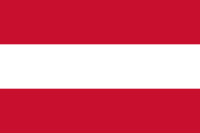List of Intangible Cultural Heritage elements in Austria

The United Nations Educational, Scientific and Cultural Organisation (UNESCO) intangible cultural heritage elements are the non-physical traditions and practices performed by a people. As part of a country's cultural heritage, they include celebrations, festivals, performances, oral traditions, music, and the making of handicrafts.[1] The "intangible cultural heritage" is defined by the Convention for the Safeguarding of Intangible Cultural Heritage, drafted in 2003[2] and took effect in 2006.[3] Inscription of new heritage elements on the UNESCO Intangible Cultural Heritage Lists is determined by the Intergovernmental Committee for the Safeguarding of Intangible Cultural Heritage, an organisation established by the convention.[4]
Austria ratified the convention on 9 April 2009.
Intangible Cultural Heritage elements
[edit]Representative List
[edit]| Name | Image | Year | No. | Description |
|---|---|---|---|---|
| Schemenlaufen, the carnival of Imst, Austria | 
|
2012 | 00726 | The carnival of Imst (Tyrol). |
| Classical horsemanship and the High School of the Spanish Riding School Vienna | 2015 | 01106 | ||
| Blaudruck/Modrotisk/Kékfestés/Modrotlač, resist block printing and indigo dyeing in Europe +[a] | 
|
2018 | 01365 | |
| Avalanche risk management +[b] | 2018 | 01380 | ||
| Falconry, a living human heritage +[c] | 
|
2021 | 01708 | |
| Lipizzan horse breeding traditions +[d] | 
|
2022 | 01687 | |
| Timber rafting +[e] | 
|
2022 | 01866 | Timber rafting is a method of transporting felled tree trunks by tying them together to make rafts, which are then drifted or pulled downriver, or across a lake or other body of water. |
| Traditional irrigation: knowledge, technique, and organization +[f] | 2023 | 01979 | ||
| Transhumance, the seasonal droving of livestock +[g] | 
|
2023 | 01964 | Transhumance is a type of pastoralism or nomadism, a seasonal movement of livestock between fixed summer and winter pastures. |
Good Safeguarding Practices
[edit]| Name | Year | No. | Description |
|---|---|---|---|
| Regional Centres for Craftsmanship: a strategy for safeguarding the cultural heritage of traditional handicraft | 2016 | 01169 | |
| Craft techniques and customary practices of cathedral workshops, or Bauhütten, in Europe, know-how, transmission, development of knowledge and innovation +[h] | 2020 | 01558 | A Bauhütten (cathedral workshop), is a structure dedicated to the construction, maintenance and restoration of a monument with a specific mode of operation, known as Bauhüttenwesen. |
See also
[edit]Notes
[edit]- ^ Shared with Czechia, Germany, Hungary and Slovakia.
- ^ Shared with Switzerland.
- ^ Shared with Belgium, Croatia, Czechia, France, Germany, Hungary, Ireland, Italy, Kazakhstan, Republic of Korea, Kyrgyzstan, Mongolia, Morocco, Netherlands, Pakistan, Poland, Portugal, Qatar, Saudi Arabia, Slovakia, Spain, Syria, and the United Arab Emirates.
- ^ Shared with Bosnia and Herzegovina, Croatia, Hungary, Italy, Romania, Slovakia and Slovenia.
- ^ Shared with Czechia, Germany, Latvia, Poland, and Spain.
- ^ Shared with Belgium, Germany, Italy, Luxembourg, Netherlands, and Switzerland.
- ^ Shared with Albania, Andorra, Croatia, France, Greece, Italy, Luxembourg, Romania, and Spain.
- ^ Shared with France, Germany, Norway, and Switzerland.
References
[edit]- ^ "What is Intangible Cultural Heritage?". UNESCO Intangible Cultural Heritage. Retrieved 13 January 2024.
- ^ "Text of the Convention for the Safeguarding of Intangible Cultural Heritage". UNESCO Intangible Cultural Heritage. Retrieved 13 January 2024.
- ^ "The States Parties to the Convention for the Safeguarding of the Intangible Cultural Heritage (2003)". UNESCO Intangible Cultural Heritage. Retrieved 13 January 2024.
- ^ "Functions of the Intergovernmental Committee for the Safeguarding of Intangible Cultural Heritage". UNESCO Intangible Cultural Heritage. Retrieved 13 January 2024.
External links
[edit]- UNESCO Intangible Cultural Heritage: Official site
- UNESCO Intangible Cultural Heritage in Austria: Official site


